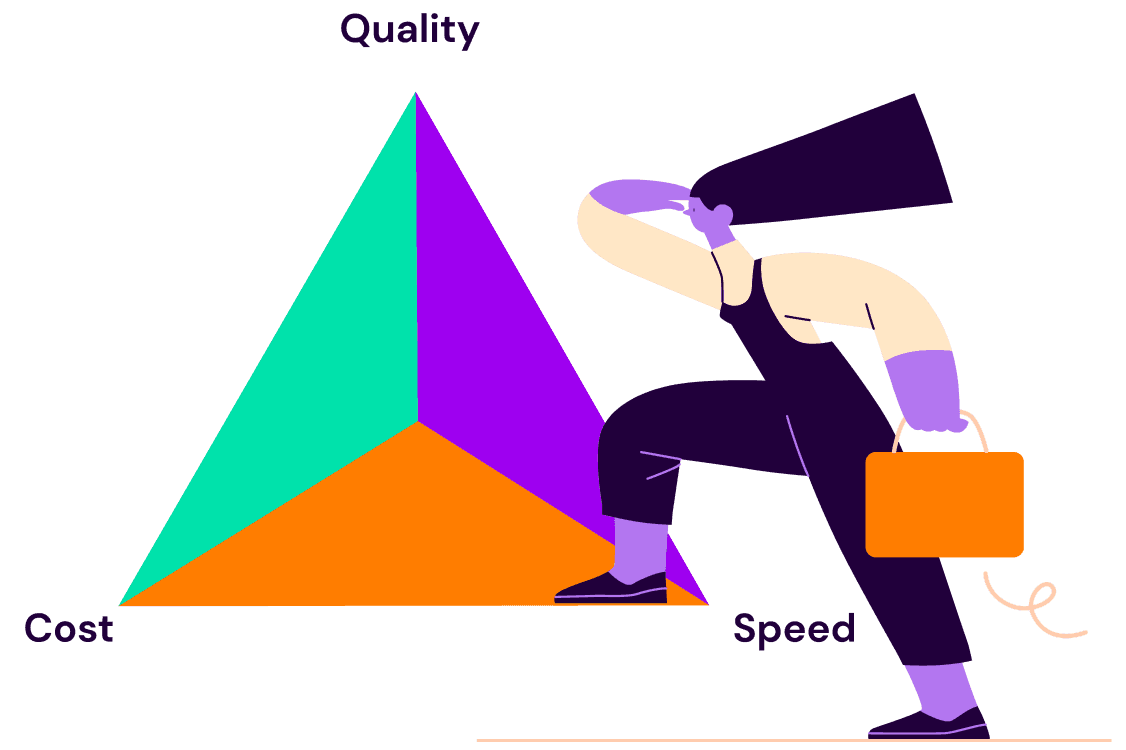
Back to blogs

How Health Systems Can Reduce Travel Nurse Spend with Talent Sourcing
How can healthcare organizations reduce their spend on travel nurses? It’ll take the right tools and talent sourcing strategy to bring in qualified, full-time staff—including knowing where to find the right nursing candidates and how to engage them.
Hiring nurses is more competitive as alternatives get more expensive
Two years into the pandemic, the American Nurses Foundation found that 52% of nurses either were considering or intending to leave their roles. As the nursing shortage worsened alongside high turnover, many healthcare systems turned to traveling nurses as a temporary staffing solution.
However, the increased demand for contract labor also drove up rates. According to the American Hospital Association, “in 2019, hospitals spent a median of 4.7% of their total nurse labor expenses for contract travel nurses, which skyrocketed to a median of 38.6% in January 2022.” By March, the median rate for contract nurses had increased to more than three times the wage of employed nurses.
What is a reliance on travel nursing costing your organization?
According to NSI’s 2022 report, the average nurse salary in the United States is $110,144, while the average traveling nurse costs $320,320—a staggering difference of $210,184 per year. Plus, most nursing job sites charge upwards of $200 per listing per month, with some at $500 or ever higher. At the same time, many recruitment outsourcing firms charge 15-30% of the salary to fill a position.
Not only is a reliance on contract nursing incredibly expensive and unsustainable, but it’s created huge imbalances in pay between regular full-time and supplemental staff. On the current path, many hospitals and health systems face an impending financial crisis.
3 invaluable practices for building a pipeline of qualified nursing talent
Many healthcare organizations don’t have an effective way to proactively look for nursing talent. In fact, some rely solely on attracting candidates through job boards. By itself, this “post and pray” strategy is incredibly limiting, time-consuming, and costly. A proactive sourcing strategy can help health systems reduce their spend on travel nurses by finding untapped and passive talent for full-time roles.
1. Inform your hiring strategy with talent intelligence
Insights into the talent market can help you develop a targeted, data-driven approach to sourcing and forecasting for future hiring. Since few nurses are on LinkedIn and other social networks, unique candidate data can help you discover nurses with the specific license requirements you need—and contact information to reach out.
2. Engage authentically to build relationships
Once you’ve identified qualified nursing candidates, bring them into your talent pipeline by showcasing your employer brand through empathetic messages. Understanding what a nurse wants in their career and communicating all that your organization has to offer may require some time. It’s a long game, but nurturing relationships will help you build a strong pipeline if your current openings aren’t a great fit now.
3. Leverage technology to help you move faster
Modern sourcing platforms allow you to analyze the market, find qualified candidates, and initiate outreach through a variety of channels—all in one place. You can also employ AI to more quickly review applications for roles with greater volumes of inbound candidates, giving your recruiters more time to focus on high-value roles and other strategic work.
Dive deeper with this related reading: 3 Key Strategies to Hiring Nurses in 2023
Stay competitive during a nursing talent shortage with SeekOut for Healthcare
While there publicly available tools to source nurses and other hard-to-find healthcare talent, they are often cumbersome and require a lot of time, effort, and advanced technical know-how.
SeekOut for Healthcare centralizes all your healthcare sourcing into one powerful platform, with the most robust database of over 31 million doctors, nurses, and other healthcare providers. Nurse licensing data is enriched with other public profile data, searchable by specialty, license status, experience, and more. You can:
Access the largest clinical worker talent pool in the market, including every licensed nurse in more than 45 states and US territories.
Use powerful search and filtering capabilities to proactively locate nurses by region, specialization, license status, and more.
Reach candidates with accurate contact information through a variety of channels—personal email, phone, even postal mail—directly from SeekOut.
Proactively source nursing talent with unmatched insights about the local and national healthcare talent landscape.
Ready to leave “post and pray” in the past?
Learn more about SeekOut for Healthcare or see it in action and request a demo today.
See us in action
Learn how SeekOut unifies people data to help organizations reach their talent goals
Request a demo



